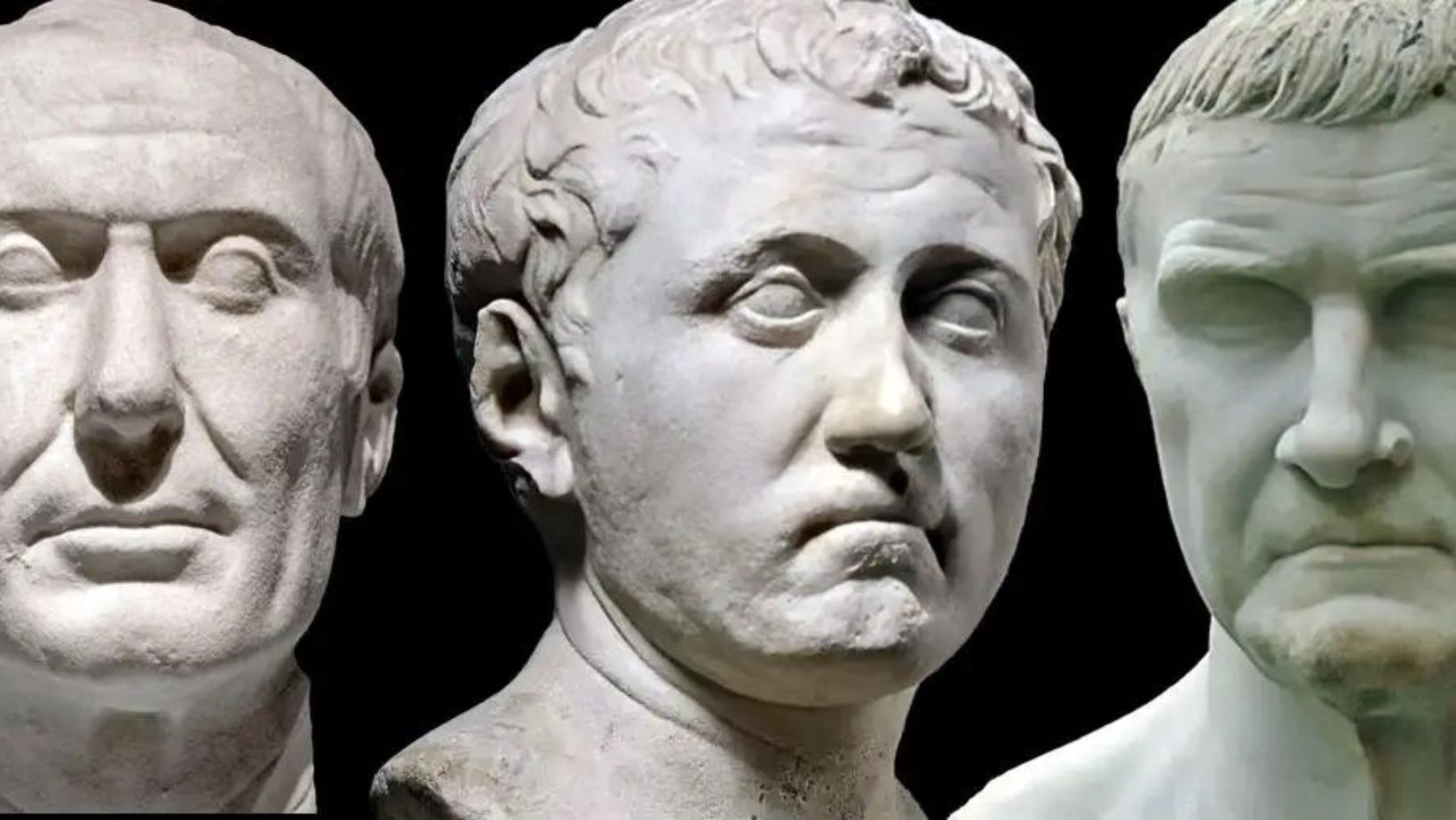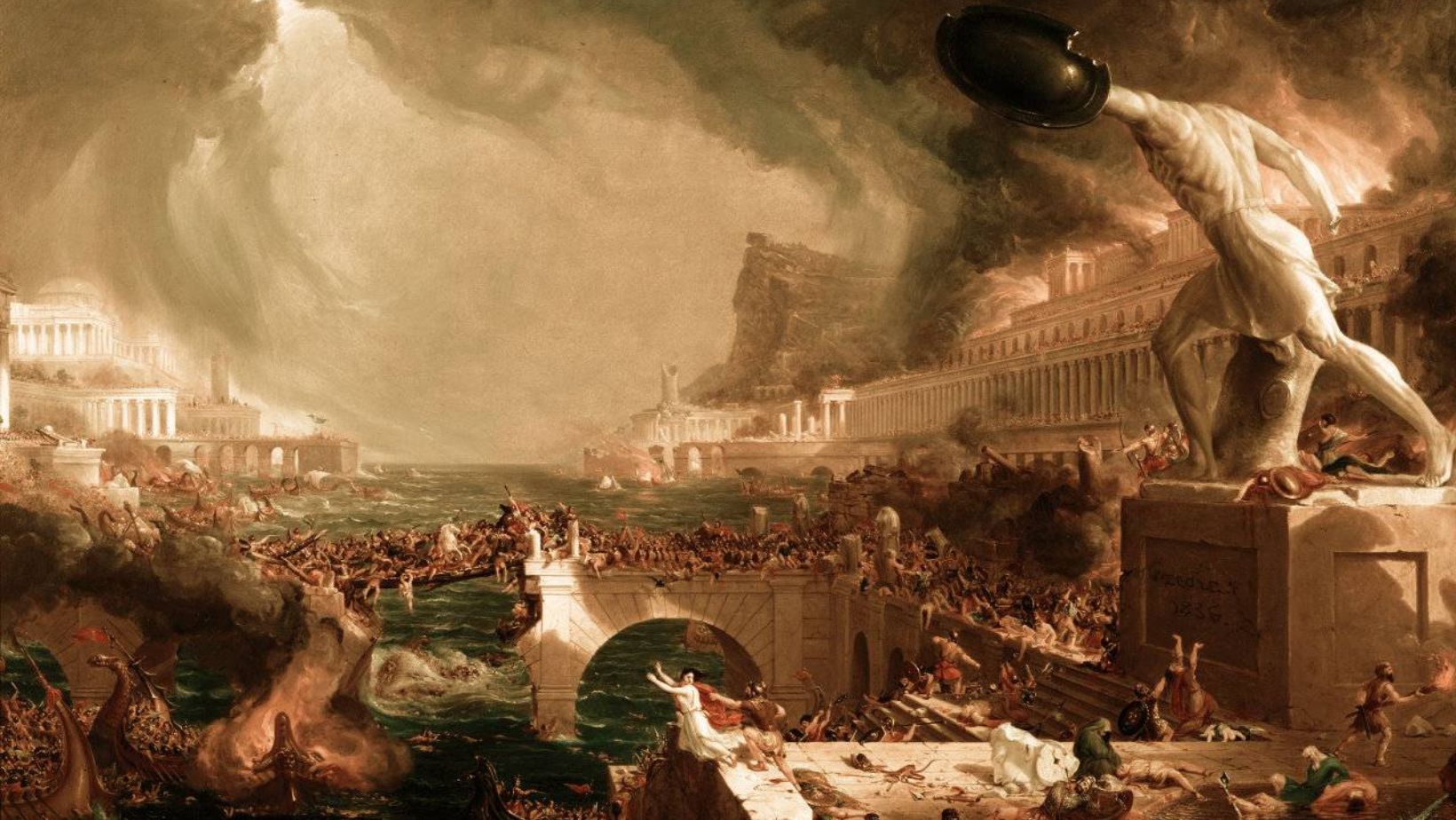Picture this: three titans of Roman politics – Julius Caesar, Pompey the Great, and Marcus Licinius Crassus – joining forces in an uneasy alliance that would shape the destiny of an empire. This is the story of the Triumvirate of Rome, a tale of ambition, power, and betrayal that echoes through the ages.
In the waning days of the Roman Republic, these three men sought to advance their own agendas by leveraging their combined influence. But as their personal rivalries and jealousies grew, the cracks in their alliance began to show. The stage was set for a showdown that would change the course of history.
Table of Contents:
- The Rise and Fall of the First Triumvirate
- The Second Triumvirate’s Quest for Power
- The Lasting Impact of the Triumvirates on Roman History
- Conclusion
The Rise and Fall of the First Triumvirate:Triumvirate of Rome

The Triumvirate of Rome was a game-changer in the 1st century BC. It was a power move that shook up the already unstable Roman Republic.
Three titans – Julius Caesar, Pompey the Great, and Marcus Licinius Crassus – joined forces in an uneasy alliance. Their goal? To control the political scene and further their own ambitions.
Formation of the Alliance:Triumvirate of Rome
In 60 BC, these three heavy hitters formed the First Triumvirate. Each brought something unique to the table:
- Caesar had military prowess and popularity with the masses
- Pompey was a respected general with influence in the Senate
- Crassus, one of the richest men in Rome, had the financial clout
Together, they were a force to be reckoned with. They manipulated elections, secured key military commands, and dominated Roman politics.
Key Players and Their Roles
Let’s take a closer look at these three power players:
Gaius Julius Caesar was a rising star. He’d already made a name for himself as a skilled orator and military commander. Caesar sought the consulship and needed the support of Pompey and Crassus to get it.
Gnaeus Pompeius Magnus, aka Pompey the Great, was a military hero. He’d earned his rep by defeating Rome’s enemies abroad. Pompey wanted land for his veterans and the approval of his eastern settlements.
Marcus Licinius Crassus was the moneyman. He’d made a fortune through real estate speculation and slave trading. Crassus wanted a shot at military glory and to extend his influence.
These three could achieve their individual goals and keep their rivals in check by pooling their resources and influence.
“The alliance between Caesar, Pompey, and Crassus was not built on mutual trust or friendship, but rather on a shared desire for power and a need to counter the influence of the Senate.” – Adrian Goldsworthy, “Caesar: Life of a Colossus”
Fraying of the Pact
Despite their initial success, cracks began to show in the First Triumvirate:
- Pompey grew jealous of Caesar’s military successes and popularity
- Crassus and Pompey had a long-standing rivalry
- The death of Caesar’s daughter Julia (Pompey’s wife) in 54 BC strained the alliance
The final blow came in 53 BC when Crassus was killed in battle against the Parthians. With Crassus gone, the delicate balance of power was upset. Caesar and Pompey were left to vie for control of the Roman Republic.
Collapse and Its Aftermath
The once-powerful First Triumvirate was no more. Caesar and Pompey’s relationship deteriorated into open hostility.
In 49 BC, Caesar famously crossed the Rubicon River with his army, sparking a civil war. Pompey, backed by the Senate, opposed him.
After years of bloody conflict, Caesar emerged victorious. Pompey was assassinated in Egypt, and Caesar became the most powerful man in Rome.
The collapse of the First Triumvirate marked the beginning of the end for the Roman Republic. It set the stage for Caesar’s rise to power and his eventual assassination in 44 BC.
The First Triumvirate was an alliance between Julius Caesar, Pompey the Great, and Marcus Licinius Crassus that dominated Roman politics in the 60s and 50s BC. #RomanHistory #JuliusCaesar #PompeyMagnus pic.twitter.com/jxOtZkTxwL
— Roman History (@romanhistory1) March 5, 2023
The rise and fall of the First Triumvirate was a turning point in Roman history. It showcased the fragility of the Roman Republic and set the stage for the rise of the Roman Empire.
The Second Triumvirate’s Quest for Power: Triumvirate of Rome
Just when you thought the drama couldn’t get any juicier, enter the Second Triumvirate. This new power trio rose from the ashes of Julius Caesar’s assassination in 44 BC.
The players? Mark Antony, Caesar’s right-hand man. Octavian, Caesar’s adopted son and heir. Marcus Aemilius Lepidus was a powerful politician and military commander.
Creation and Purpose
The Second Triumvirate, officially known as the “tresviri rei publicae constituendae” (try saying that three times fast), had a clear mission:
1. Avenge Caesar’s death
2. Restore order to the chaos-ridden Republic
3. Divvy up control of the Roman world among themselves
This was no gentlemen’s agreement. The triumvirs made it official with the Lex Titia in 43 BC, granting themselves supreme authority for five years.
“The Second Triumvirate was a political alliance with a vengeance, literally. Antony, Octavian, and Lepidus united to crush Caesar’s assassins and anyone else who stood in their way.” – Tom Holland, “Rubicon: The Last Years of the Roman Republic”
Proscriptions and Brutality
The Second Triumvirate’s reign was marked by blood and terror. They instituted proscriptions, essentially a hit list of their enemies. The unlucky folks on this list had their property confiscated and a bounty placed on their heads.
No one was safe, not even Cicero, the famed orator and senator. He met a grisly end, with his head and hands displayed in the Roman Forum.
The triumvirs needed funds to wage war against Caesar’s assassins, and the proscriptions provided a handy source of income. Talk about ruthless efficiency.
Key Battles and Alliances: Triumvirate of Rome
The Second Triumvirate’s first order of business was to take down Caesar’s assassins, Brutus and Cassius. The showdown came at the Battle of Philippi in 42 BC, with Antony and Octavian leading the charge.
Brutus and Cassius were defeated, and both committed suicide. The triumvirs emerged victorious, but their alliance was shaky at best.
Antony and Octavian soon turned on each other, with Lepidus caught in the middle. The rivalry came to a head at the Battle of Actium in 31 BC. Octavian, with the help of his trusted general Agrippa, crushed Antony and his lover, Cleopatra.
Renewal and Expansion of Power
The triumvirs’ original five-year term expired in 38 BC, but they weren’t ready to relinquish power. With a few tweaks to the arrangement, they renewed the triumvirate for another five years.
Octavian got the western provinces, Antony took the east, and Lepidus was left with Africa. This division set the stage for Octavian’s eventual rise to sole power.
The Second Triumvirate, formed by Octavian, Mark Antony, and Marcus Lepidus in 43 BC, aimed to avenge Julius Caesar’s death and restore stability to the Roman Republic. #RomanHistory #Octavian #MarkAntony pic.twitter.com/QwErT6789o
— Roman Empire (@romanempire) April 15, 2023
The Second Triumvirate’s ruthless quest for power reshaped the Roman world. It paved the way for the end of the Republic and the rise of the Empire under Octavian, soon to be known as Augustus.
The Lasting Impact of the Triumvirates on Roman History: Triumvirate of Rome
The Triumvirates of Rome weren’t just flash-in-the-pan power grabs. They had a profound and lasting impact on the course of Roman history.
These alliances reshaped the political landscape, setting in motion a chain of events that would transform Rome from a republic to an empire.
Transition from Republic to Empire
The First and Second Triumvirates played a crucial role in the downfall of the Roman Republic. By consolidating power in the hands of a few individuals, they undermined the republican system’s traditional checks and balances.
The instability and civil wars that followed the triumvirates weakened the foundations of the Republic. The stage was set for the rise of a sole ruler, and that’s exactly what happened with Octavian’s victory over Antony.
“The triumvirates were like a cancer eating away at the body of the Roman Republic. They concentrated power in the hands of a few ambitious men, leading to civil war and the eventual collapse of the republican system.” – Mary Beard, “SPQR: A History of Ancient Rome”
Influence on Future Leaders and Governments: Triumvirate of Rome
The legacy of the triumvirates didn’t end with the fall of the Republic. Future Roman emperors would look to the examples of Caesar, Antony, and Octavian as models for how to seize and maintain power.
The strategies employed by the triumvirs—forming alliances, eliminating rivals, and cultivating personal loyalty—became a blueprint for aspiring rulers. In many ways, the Roman Empire was built on the foundation laid by the triumvirates.
Legacy in Roman Culture and Society

The impact of the triumvirates extended beyond politics. The lives and deeds of the key players became the stuff of legend, immortalized in art, literature, and popular culture.
Julius Caesar’s assassination, Antony and Cleopatra’s tragic romance, and Octavian’s rise to power captured the imagination of Romans for generations. They became cautionary tales about the dangers of ambition and the fickleness of fortune.
The triumvirates left an indelible mark on Roman society and culture. The stories of Caesar, Antony, and Octavian became the stuff of legend, inspiring countless works of art and literature. #RomanHistory #RomanCulture pic.twitter.com/AbCdEfGhIj
— Classical Studies (@classicalstudies) May 1, 2023
The triumvirates of Rome may have been short-lived, but their impact echoed through the centuries. They left an indelible mark on Roman politics, society, and culture, shaping the course of history in ways that still resonate today.
Key Takeaway: Triumvirate of Rome
The First Triumvirate of Caesar, Pompey, and Crassus dominated Roman politics in the 1st century BC. They leveraged their combined strengths to control elections and military commands. But jealousy and rivalry eventually led to its collapse, setting the stage for civil war between Caesar and Pompey.
Conclusion: Triumvirate of Rome
The Triumvirate of Rome may have been short-lived, but its impact on Roman history was profound. The power struggles and civil wars that followed its collapse paved the way for the rise of the Roman Empire and the reign of Emperor Augustus.
The legacy of the triumvirs lives on in the political strategies and tactics they employed, serving as a model for future leaders seeking to consolidate their power. Their story continues to captivate us, a timeless reminder of the complexities of human ambition and the fragility of even the most powerful alliances.

